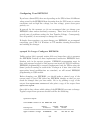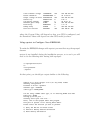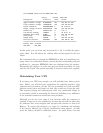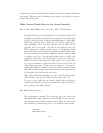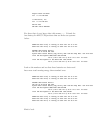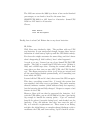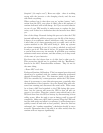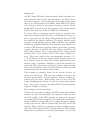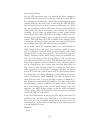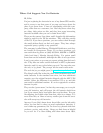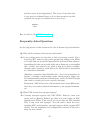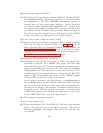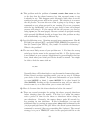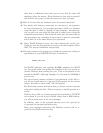Background:
An APC Smart-UPS has a microprocessor which calculates run-
time primarily based on the load attached to the UPS and on
its battery capacity. On the right side of the front display panel
there is a vertical graph of five LEDs. Each LED is an indica-
tion of battery charge in increments of twenty percent: 20, 40,
60, 80, 100% (bottom to top). For example, if the battery charge
is 99%, then only four of the five LEDs are illuminated.
To ensure that an operating system receives a graceful shut-
down when using PowerChute plus or a SmartSlot accessory, an
alert is generated by the Smart-UPS indicating that the UPS
has reached a low battery condition. The alert is audible (rapid
beeping), visual (flashing battery LED or LEDs), and readable
through the graphical interface of PowerChute plus software (or
a native UPS shutdown program within a particular operating
system.) In order to calculate this “low battery condition,” all
Smart-UPS products have a preconfigured low battery signal
warning time of two minutes (this is the factory default set-
ting). There are a total of four user-changeable settings: 2, 5,
7, or 10 minutes. If the low battery signal warning time is set
for 2 minutes, then the alerts will activate simultaneously two
minutes prior to shutdown. Similarly, if the total runtime for a
particular UPS is 30 minutes with a low battery signal warning
time set at 10 minutes, then the UPS will run on battery for 20
minutes before the low battery alert begins.
Total runtime is primarily based on two factors, battery ca-
pacity and UPS load. UPS load and runtime on battery are
inversely proportional: as load increases, battery runtime de-
creases and vice versa. When utility power is lost, the UPS
begins discharging the battery in order to support the attached
load. Once power returns, the Smart-UPS will automatically
begin to recharge its battery.
My comments on this proceedure:
I believe this proceedure works for all APC models that calulate
runtime, not just the SmartUPS. It’s important that you load
the UPS to 30% of the UPS capacity, as reported by apcupsd
or another UPS monitor program. I’ve found that normal house
lamps of different wattages allow me to adjust the load to almost
exactly what I want, which is between 30% and 35% of the UPS
capacity. This is critical te getting an accurate reading (accord-
ing to the APC web documents). Always bring the UPS to 100%
charge first, as indicated by the front panel lamps, or your UPS
92



